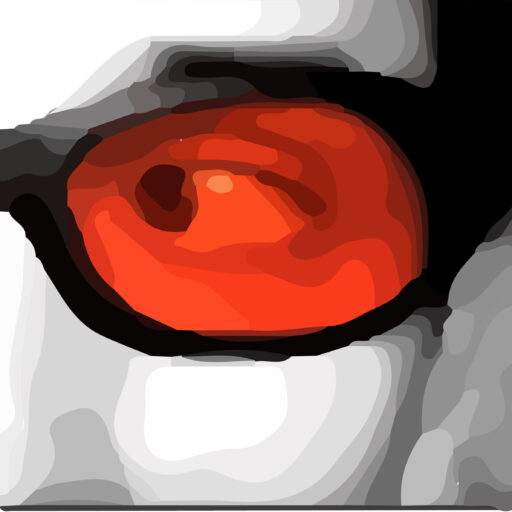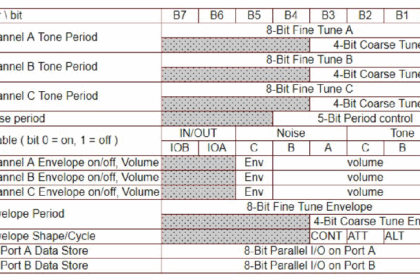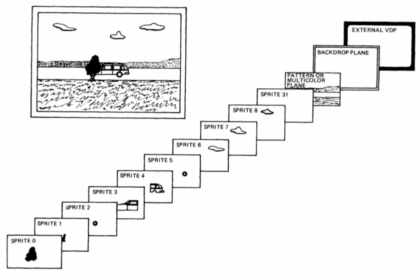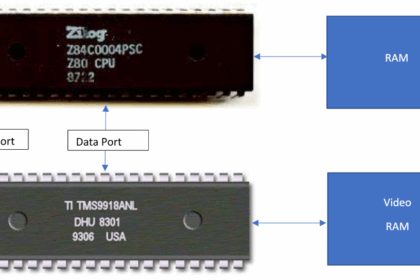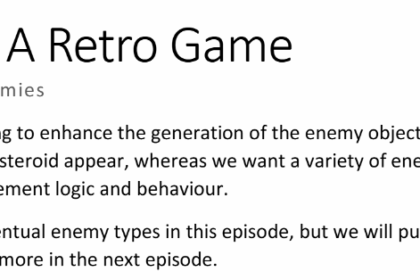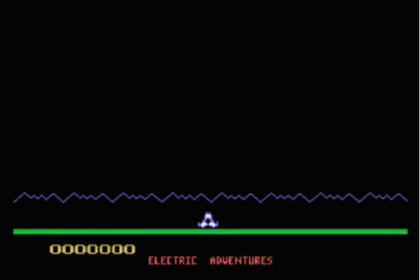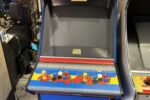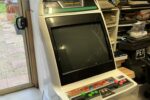In this episode, we are going to look at how we generate sound, which will allow us to add the sound effects for our game, e.g. our laser shooting, explosions when things are destroyed. The supplied ...
In this episode, we are going to continue from the last episode, where we were looking at how the TMS9918A graphics chip displays tile graphics, making a bit of a graphical demo in the process. The s...
In this episode, we are going to step away from our game to learn a little bit more detail on how graphics work on computers that use the TMS9918A graphics processor. At the end of this episode, we wi...
In this episode, we are going to enhance the generation of the enemy objects. Currently, we are only making the same type of asteroid appear, whereas we want a variety of enemies to appear on screen ...
In this episode, we are going to cover two things: detecting whether any enemy objects hit the player ship, as well as displaying the number of lives the players have remaining. This will also include...
Our Megablast game we are making is based on Astrosmash for the Intellivision, and in that game, you can both increase your score by shooting various enemies, plus lose score if any of the enemies mak...
In the Intellivision game of Astro Smash, which we are basing our game on, the main enemies are Asteroids that fall down the screen, exploding when they hit the ground. Points are awarded to the playe...
In the Intellivision game of Astro Smash, which we are basing our game on, the main enemies are Asteroids that fall down the screen, exploding when they hit the ground. Points are awarded to the playe...
In this episode, we are going to get some objects moving on the screen by: I have included the complete code for this section, so you can follow through the various steps without having to worry about...
In this episode, we are going to start making our game “Mega Blast”, so to get things started,d we are going to go through: I have included the complete code for this section, so you can follow throug...
